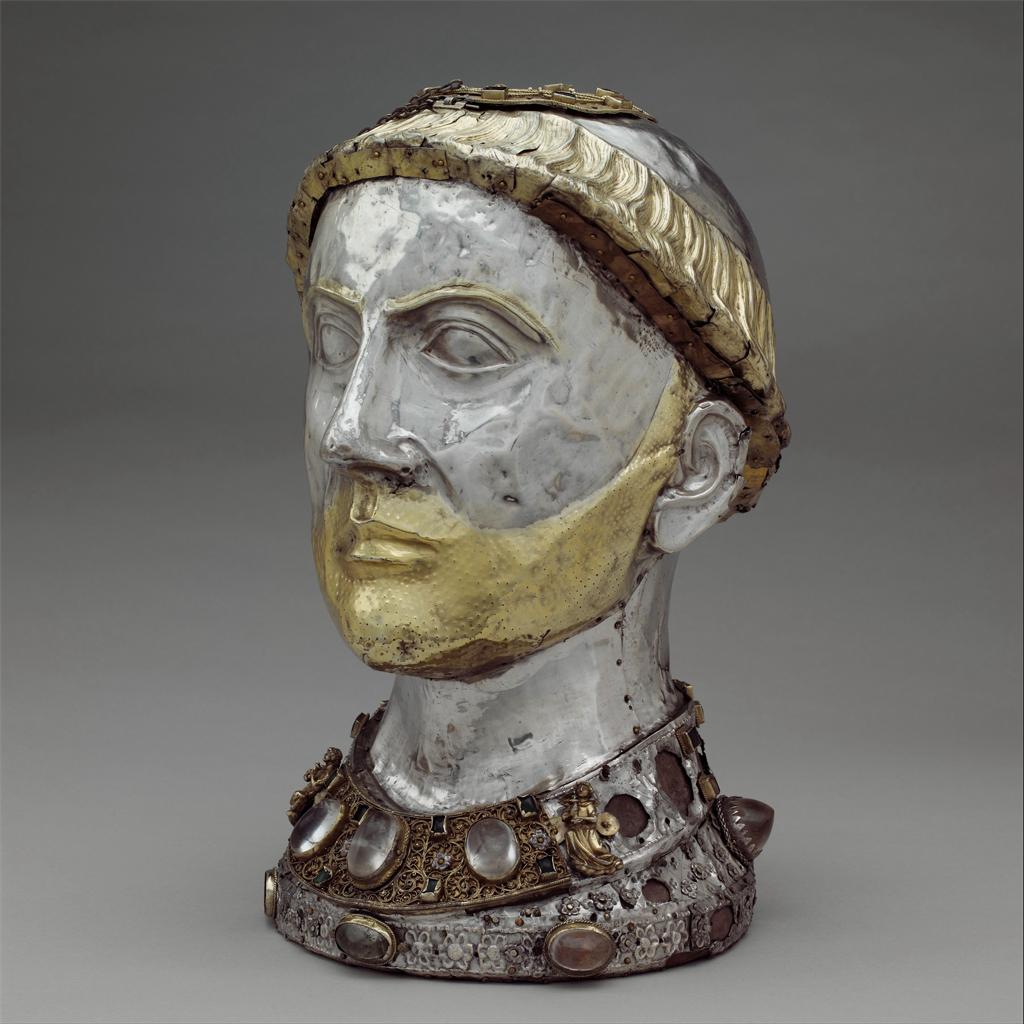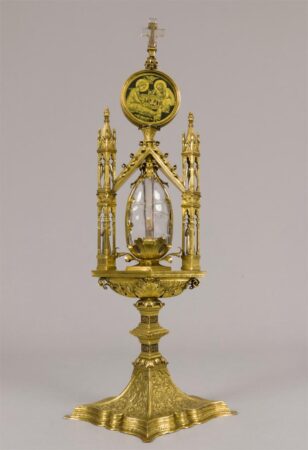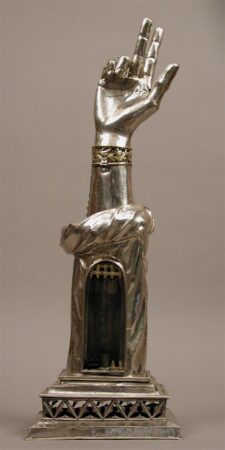What’s in the box? The art of reliquaries

Attributed to Jean de Touyl. Reliquary Shrine from the convent of the Poor Clares at Buda. ca. 1325-50. Image and data courtesy the Metropolitan Museum of Art; The Cloisters Collection.
Relics—bits of bone, clothing, shoes or dust—from Christian martyrs became popular in Western Christianity in the Middle Ages. The cult of relics dates back to the second and third centuries, when martyrs were persecuted and often killed in ways that fragmented the body, which was taboo in Roman society. The intention was to desecrate the body through execution and burning. But, Caroline Walker Bynum and Paula Gerson state that by the “late third to early fourth centuries the fragments of the martyrs had come to be revered as loci of power and special access to the divine” and, by the Second Council of Nicea in 787, relics were required for the consecration of altars.

French. Reliquary Bust of Saint Yrieix. ca. 1220-40, with later grill. Image and data courtesy the Metropolitan Museum of Art.
Reliquaries, the containers that house relics, took on many forms throughout the Middle Ages and were often crafted in homage to the martyr whose remains were within. Some were ornate caskets depicting images of the saint’s life or martyrdom, while others were crafted as busts of the saints or ornate works of glass and metal to display larger, more intact relics, such as bones.
- North Italian. Reliquary of Mary Magdalene. 14th and 15th century. Image and data courtesy the Metropolitan Museum of Art.
- Swiss. Reliquary Arm of St. Valentine. 14th century. Image and data courtesy the Metropolitan Museum of Art; Gift of J. Pierpont Morgan, 1917 ; 17.190.351a, b
An interesting phenomenon in reliquary art are those shaped like parts of the human body. These gained popularity in the West in the twelfth and thirteenth centuries, and were known as “speaking reliquaries.” According to Bynum and Gerson, this implies “that the shape expresses or ‘speaks’ the body part beneath; yet we have much evidence that many body-part reliquaries did not in fact contain the bone or body part depicted.” Instead, they were often representative of the underlying ritual associated with the relic. For instance, a reliquary in the shape of an arm could signify the blessing given by the priest or bishop. And, by the late Middle Ages, reliquaries in the West didn’t contain body parts at all, and instead usually included contact relics such as bits of clothes or shoes.
Reliquary art is an interesting and complex part of religious and art history, and speaks to both the form and function of caskets that housed relics. Many thanks to the Metropolitan Museum of Art for providing these images as part of their open access initiative; all images have Creative Commons Zero (CC0) licenses. You may find these images in JSTOR, which features approximately 1 million freely accessible images, videos, documents, and audio files from library special collections, faculty research, and institutional history materials.

